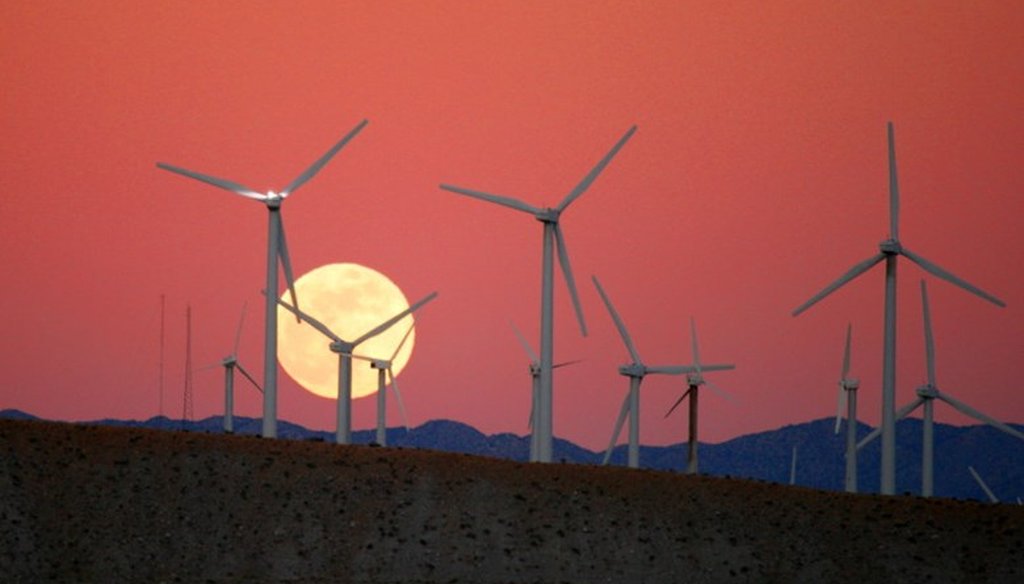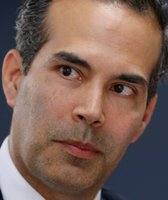Stand up for the facts!
Our only agenda is to publish the truth so you can be an informed participant in democracy.
We need your help.
I would like to contribute

State officials claim California is home to more than 500,000 clean energy jobs. Photo by Chuck Coker
Texas’ wind energy has become a popular culprit as politicians and interest groups pointed fingers at who was to blame for widespread blackouts that have left millions of Texans without power and heat amid single-digit temperatures.
Wind energy has been Texas’ fastest growing energy source over the last decade. Last year, wind supplied 23% of Texas energy demand and overtook coal as the state’s second largest resource after natural gas, which supplied 46% last year.
Over Valentine’s Day weekend, before grid operators mandated state-wide blackouts, reports began filtering in that several wind turbines had frozen to a halt due to unusual levels of moisture in West Texas typically dry air. This was first revealed Friday during a Texas Public Utility Commission meeting. By Sunday afternoon, the Electric Reliability Council of Texas, which manages the state-wide grid, was reporting that about half of Texas’ 24,000 megawatts of installed wind capacity was frozen.
Blackouts swept the state early Monday as the historic chill skyrocketed demand and tanked supply. By Tuesday, as the number of households without power climbed to 4 million, many state Republicans placed the blame squarely on renewables.
The blackouts "never would have been an issue had our grid not been so deeply penetrated by renewable energy sources that contribute the least when you need them the most, yet are propped up by billions in taxpayer-funded subsidies every year," the Texas Public Policy Foundation, a right-wing think tank, said in a Tuesday morning statement.
By Tuesday evening, U.S. Rep. Dan Crenshaw, R-Houston, tweeted a thread that claimed to reveal "the truth about what happened," and his criticisms were along similar lines — wind energy is too feeble to withstand extreme weather yet has been over-subsidized by the federal government.
"A mix of over-subsidized wind energy and under-investment in gas power means we didn’t have enough base load energy for a massive spike in demand," Crenshaw tweeted.
"Can we ever rely on renewables to power the grid during extreme weather? No, you need gas or nuclear," he said. "And subsidizing investment in wind has pushed gas and nuclear out."
Gov. Greg Abbott jumped on the bandwagon during a Tuesday evening Fox News appearance, where he said the failure of wind energy demonstrates how the Green New Deal would be "a deadly deal for America."
"Our wind and our solar got shut down ... and that thrust Texas into this situation where it was lacking power at a statewide basis," he said on Hannity. "As a result, it just shows that fossil fuels are necessary for the state of Texas as well as other states to make sure that we're able to heat our homes in the wintertime and cool our homes in the summertime."
But placing blame on one single energy resource directly contradicts information the Electric Reliability Council of Texas has been reporting throughout this energy crisis — that blackouts were caused as electric plants of all energy sources "began tripping offline in rapid succession."
On Tuesday, as blackouts dragged on for a second day, Electric Reliability Council of Texas CEO Bill Magness said that the energy deficit was mostly due to impacted gas plants.
"It appears that a lot of the generation that has gone offline today has been primarily due to issues on the natural gas system at large," Magness said. "From getting the gas from the wellheads, through the pipes to generators and to consumers for heating natural gas. That really seems to be a lot of the issues from the plant that we're seeing become unavailable during the day today."
With the blame game heating up, PolitiFact fact-checked several claims made by Crenshaw, Abbott and the Texas Public Policy Foundation.
Blackouts ‘never would have been an issue' if it hadn’t been for renewables
On Tuesday, the Electric Reliability Council of Texas reported that 45,000 megawatts were offline due to a variety of reasons. Of that amount, around 29,000 of those lost megawatts were attributable to thermal generators, or non-renewable energy sources. The remaining 16,000 megawatts were due to installed wind resources in West Texas.
Wind resources are quantified in two ways: the total installed capacity (meaning the maximum amount of energy that wind farms would produce under ideal conditions) and generation capacity (meaning the amount of electricity that wind inventory is expected to produce at any given point in the year given seasonal fluctuations).
Texas has about 24,000 megawatts of installed wind capacity connected to the grid. As of Tuesday about 16,000 megawatts of that capacity was offline due to icing.
During wintertime, which is known to be a low wind season, generation capacity is only projected to be around 6,000 megawatts. Even though the unfrozen coastal turbines overperformed due to the windy weather the storm created, the grid was in need of any juice the frozen turbines could have otherwise supplied.
"It’d be fair to say that wind has underperformed, but it’s not alone in having done that," said Josh Rhodes, a University of Texas research associate at the Energy Institute. "A third of our thermal plants were offline."
Indeed, the largest energy deficit came from the state’s gas plants. While freezing temperatures impact wind energy by freezing up turbine blades, natural gas plants are impacted in a multitude of ways. Gas wells can freeze up. Uninsulated pipelines can cause certain gasses with heavy carbon chains to liquify. A gas, coal or nuclear plant’s water intake or outtake pipes can freeze.
"All of those things can impact operations of any type of plant," said Bernadette Johnson, an energy economist at Enverus.
All these factors combined to shut down enough thermal energy plants to remove 29,000 megawatts from the grid.
The amount of wind energy that could have been produced from the frozen turbines was sorely needed, but it’s misleading to say that blackouts "never would have been an issue had our grid not been so deeply penetrated by renewable energy sources," as the Texas Public Policy Foundation claimed. Abbott's comment on Hannity's show placing blame for the outages on wind and solar energy production runs along the same lines and is equally misleading.
The Texas Public Policy Foundation's "statement does not appear to be supported by the evidence," said University of Houston Energy Fellow Ed Hirs. "There’s no way wind generation could contribute to the collapse of 40% of the generation capacity of ERCOT."
‘We couldn’t even depend’ on renewables working
Crenshaw claimed in a tweet that "the little energy that power regulators planned on being supplied from wind was now gone."
While freezing weather cut wind supplies from the West Texas region, many other unfrozen turbines in the Gulf Coast region continued to spin. As previously mentioned, those sources generated at higher rates than previously projected thanks to the blustery weather.
Overall, it’s safe to say Texas' installed wind capacity in West Texas underperformed these past few days, but it’s inaccurate to say that wind power "was now gone," as Crenshaw claims.
‘We have almost 31GW of wind installed on the grid’
In the same tweet, Crenshaw said that the Electric Reliability Council of Texas has "almost 31 (gigawatts) of wind installed on the grid, but on Monday we couldn’t even depend on 6 (gigawatts) working."
Texas has around 24 gigawatts of installed wind capacity connected to its grid, with another 1,800 megawatts expected to be added in 2021.
There is another 7 gigawatts of wind energy installed in Texas, but it is connected to a separate grid — the Eastern Interconnection, which spans the eastern seaboard to Oklahoma.
‘Every natural gas plant stayed online’
In another tweet, Crenshaw claimed that "every natural gas plant stayed online. The ‘downed’ plants were due to scheduled maintenance."
It’s true that gas plants require annual maintenance. In Texas, maintenance is typically performed during the winter months when demand is lowest.
Before the Valentine's Day weekend storm, thermal plants producing around 14,000 megawatts of energy were offline, presumably due to maintenance and curtailments. After the storm struck, the Electric Reliability Council of Texas reported 29,000 megawatts of thermal energy plants were down.
"We’re seeing the loss across various generation types, and those losses came pretty much the same time as we saw this storm sweep through and have its impact on lots of different kinds of generation," said grid CEO Bill Magness.
A final word
The overall consensus from energy experts is that it’s far too soon to draw conclusions on what the exact cause or causes of the blackouts were. All agree that the single-digit temperatures that shattered the grid’s previous record for wintertime demand quickly outstripped the grid’s design parameters.
"It’s too early to play the blame game," Johnson said. "Everybody naturally wants to play the blame game depending on where they sit politically. I think the real answer lies in the middle somewhere."
Nonetheless, attempts to place the blame squarely on one energy source is misleading.
"If you’re pointing to a few thousand megawatts of wind being short and ignoring the fact that tens of thousands of thermals is short — I don’t see how you can paint that kind of picture," Rhodes said.
Our Sources
Tweet thread, U.S. Rep Dan Crenshaw, Feb. 16, 2021
Texas Public Policy Foundation, Life:Powered project, Feb. 16, 2021
Electric Reliability Council of Texas, press conference, Feb. 14-16, 2021
The Daily Beast, Texas Gov. Takes Time to Blast Green New Deal on ‘Hannity’ While Millions Still Without Power, Feb. 16, 2021
Austin American-Statesman, Frozen wind turbines hamper state’s electric output, grid operator says, Feb. 14, 2021
Interview, University of Houston Energy Energy Fellow Ed Hirs, Feb. 16, 2021
Interview, University of Texas Research Associate Joshua Rhodes, Feb. 16, 2021
Interview, Enverus Energy Economist Bernadette Johnson, Feb. 16, 2021
Electric Reliability Council of Texas, Fuel Mix Report 2020, accessed Feb. 16, 2021












































